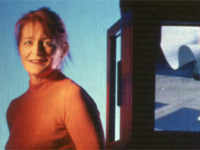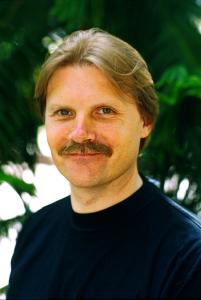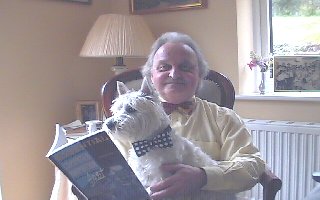|
Theory
and Practice of Computer Graphics 2004
|
||
|
Organised
by EGUK
|
||
|
Key note speakers: |
||
Conference
Keynote Speakers
| Biographical Sketch: | ||
|
|
"Behavioural speech and emotions" Abstract. Virtual
humans have been the focus of computer graphics research for several
years now. The amalgamation of computer graphics and artificial
intelligence has lead to the possibility of creating believable
virtual personalities. The focus has shifted from modeling and animation
towards imparting |
Nadia Magnenat -Thalmann has pioneered research
into virtual humans over the last 25 years. She obtained several
bachelors and Master degrees in various |
| Biographical Sketch: | ||
|
|
"How the computer animation industry has changed over the
last Abstract: Mike takes an affectionate look back at
last two decades of the computer animation industry, and how
|
Mike has worked for more than 20 years in the computer animation industry. As head of Graphics at Research Recordings (now Air TV) in the early 80s, his work on the title sequence for the first series of Spitting Image won the D&AD Silver Award for outstanding television graphics. In 1984 he joined Electric Image as Director of Production. In 1992 Mike started the computer animation department at FrameStore CFC, which has since been at the forefront of European CG animation; the company is now the largest visual effects and computer animation studio in Europe. He has won a BAFTA and four Emmy awards for his work on the BBC Science series Walking with Dinosaurs and Walking with Beasts. Mike is a regular speaker at Computer Animation conferences worldwide and received an Honorary Doctorate of Arts from Bournemouth University in 2002. Framestore CFC's CGI department is one of the most highly regarded computer animation studios in the world, respected for both film and broadcast work. Encompassing movies such as the Harry Potter films, 'Blade 2' and 'Mission: Impossible 2', television programmes like 'Walking with Dinosaurs', 'Walking with Beasts' and 'Dinotopia', and commercials such as 'Xbox: Mosquito', 'Levi's: Odyssey', and 'Guinness: Surfer', our CGI work has helped us win numerous awards, including a BAFTA and ten Primetime Emmys (see awards). |
| Biographical Sketch: | ||
|
|
Title: "Educating Tomorrow's Computer Animators"
|
Prof. John Vince began
working in computer graphics at Middlesex Polytechnic in 1968. His
research activities centred on computer animation software and resulted
in the PICASO and PRISM animation systems. Whilst at Middlesex, he
designed the UK’s first MSc course in Computer Graphics, and
developed a popular programme of short courses in computer animation
for television designers.
In 1986 he joined Rediffusion Simulation as a Research Consultant and worked on the development of real-time computer systems for commercial flight simulators. In 1995 he was appointed Professor of Digital Media at the National Centre for Computer Animation at Bournemouth University, and in 1999 he was made Head of Academic Group for Computer Animation. He has written and edited over 20 books on computer
graphics, computer animation and virtual reality. He is a co-Editor-in-Chief
of the VR Journal, and is currently President of the VR Society. |



